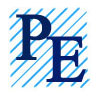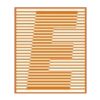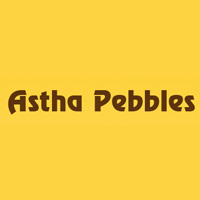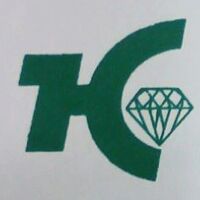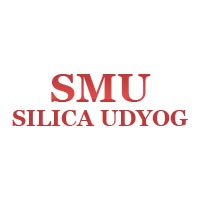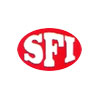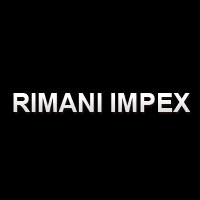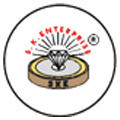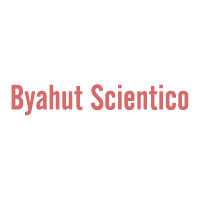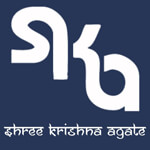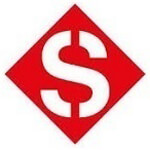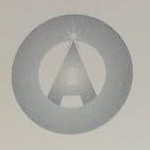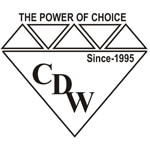Top Suppliers of Abrasive Grains
-

Prateek Enterprises
Vivek Vihar, Delhi, India
felt buff, felt disc, felt polishing ring, Buffing Wheels, felt split laps, Mandrel Mounted Felt Bob -

Enpro
Shirol, kolhapur, Maharashtra, India
Stainless Steel Cut Wire Shots, cast steel shots, Rounded Steel Cut Wire Shots, Cylindrical Steel Cut Wire Shots, steel cut wire shots -

ANUPAM ENTERPRISES
Kamla Nehru Nagar, Jodhpur, Rajasthan, India
Non-Woven wheel, Stone Grinding Black Flexible Grinding Wheel, Depressed Centre Wheel, Non Loading Zinc Stearated SiC Abrasive paper, Cutting Wheels, ..more -

Astha Pebbles
Andheri West, Mumbai, Maharashtra, India
Polished Pebble Stones -

Heera Chemicals
Girgaon, Mumbai, Maharashtra, India
pumice powder -

SMU SILICA UDYOG
Karol Bagh, Delhi, India
Garnet Sand -

GOLDEN BRIDGE WELDING ELECTRODES
Avinashi Road, Coimbatore, Tamil Nadu, India
Resinoid Cutting Wheel, resinoid cutting wheels, Grinding Wheels, Resinoid Grinding Wheel, Grinding Wheel, resinoid grinding wheels -

Pasari Group
Bistupur, Jamshedpur, Jharkhand, India
aluminum shots, Boron Oxide Powder -

Shree Bajrang Sales (P) Ltd.
New Cotton Market, Nagpur, Maharashtra, India
Steel Shots, Steel Grits, Aluminium Shots -

R. K. Phosphates Pvt. Ltd.
Madhuban, Udaipur, Rajasthan, India
Emery Grains -

Ganesh Ji Traders
Sector 66, Noida, Uttar Pradesh, India
Abrasive Belts -

Royal Industries
Bulandshahr Road Industrial Area, Ghaziabad, Uttar Pradesh, India
80m/s Tashi Cutting Wheel, 4 Inch Tashi Cutting Wheel, 80m/s Xtra Cut Cutting Wheel, 14 Inch Xtra Cut Cutting Wheel, 4 Inch Xtra Cut Cutting Wheel, 14 ..more -

Super fine Industries
Sector 24, Faridabad, Haryana, India
tungsten carbide nozzles, Steel Grit, Steel Shots, Aluminum Oxide Abrasive, Glass Bead Abrasive, Cut Wire Shots, steel cut wire shots -

Rimani Impex
Wazirpur, Delhi, India
Non Woven Interleaf Wheel, Abrasive Flap Discs, Cutting Wheel Discs, Abrasive Wheels, Polishing Cloth, polishing abrasives, Cotton Buffing Wheels, abr ..more -

P. P. Singh Stone & Company
Jwalapur, Haridwar, Uttarakhand, India
Polished Pebble Stones -
TI
TMK International
Jodhpur, Rajasthan, India
Natural Red Emery Grains, Natural Black Emery Grains, Natural Emery Grains black & Red -

Arth Metallurgicals Pvt. Ltd.
Saddu, Raipur, Chhattisgarh, India
Aluminium Shots, Synthetic Slag -

Shivam Enterprises
Mohali, Punjab, India
Abrasive Spindle Mop Wheels, Spindle Non Woven Wheels, Velcro Disc, Abrasive Flap Wheels, Abrasive PSA Disc, Abrasive Sector Wheels, abrasive cloth di ..more -

S. K. Enterprise
Gidc Vatwa, Ahmedabad, Gujarat, India
Diamond Wheel For Beveling Machine, Metal Bond Diamond Wheel, V-Groove Grinding Diamond Wheel, glass grinding diamond wheel, Optical Glass Grinding Di ..more -

Crystal Ion Engineers
Ballabhgarh, Faridabad, Haryana, India
Boron Nitride Powder, Boron Nitride Suspension -

P.M.Tools & Abrasives
Delhi Road, Meerut, Uttar Pradesh, India
Diamond C Mounted Points, electroplated grinding wheels, electroplated mounted points, Cut Off Wheels, metal bond mounted points, Diamond Copper Polis ..more -

Lakshmi Abrasives Pvt. Ltd.
Dehradun Road, Saharanpur, Uttar Pradesh, India
Aluminum Oxide Cloth Roll, industrial sanding belts, Aluminum Oxide Cloth, Aluminium Oxide Paper Disc, Sand Paper, Silicon Carbide Waterproof Paper, E ..more -

G. D. Marble & Stone Care
Shiv Vihar, Jaipur, Rajasthan, India
Abrasive Fibre Rolls, Abrasive Brushes -

Byahut Scientico
Jhotwara, Jaipur, Rajasthan, India
Waterproof Abrasive Paper -

T.Firoz & Company
S.P Road Cross, Bangalore, Karnataka, India
abrasives grinding wheels -

Sical Abrasives
Yedabettu, Udupi, Karnataka, India
Mounted Points, taper cup grinding wheels, Profile & Off Hand Grinding Wheels, Internal Grinding Wheels, Bench Grinding Wheels, Wheel Dressing Sticks, ..more -

Singhvi Traders
Bapu Bazar, Udaipur, Rajasthan, India
Wire Saw Aluminium Wheel -

BIEXI TECHNO PRIVATE LIMITED
Kishangarh, Ajmer, Rajasthan, India
Marble Granite Abrasives -

Peninsular Traders
Perumanoor, Kochi, Kerala, India
Garnet Sand -

RAJAT AMRI STONE
Kim, Surat, Gujarat, India
Diamond Grinding Wheel, Grinding Wheel, white aluminum oxide powder, Green Silicon Carbide, Snagging Wheels -

M. R. Beltings
Kundli, Haryana, India
Anti Abrasive Rubber Conveyor Belt -

Chaman International
Kundli, Haryana, India
Automatic Polishing Machine Pested Cloth Buffing Wheels, Automatic Polishing Machine WR Sisal Buffing Wheels, Manual Polishing Machine Green & Blue Cl ..more -

U - Tech Rubber Products Pvt. Ltd
Sriperumbudur, Chennai, Tamil Nadu, India
Rubber Flexible Polishing Grinding Wheels, Rubber Control Wheel, Hypodermic Needle Slitting & Cut Off Wheel, Heavy Duty Specialty Grinding Wheel, Rubb ..more -

Shree Krishna Agate
Khambhat, Anand, Gujarat, India
Yellow Polished Pebble Stones, Grey Polished Pebble Stones, White Polished River Pebble Stones, Black Polished Pebble Stones -
UH
Universal Hard Metal Co.
Agra Road, Aligarh, Uttar Pradesh, India
Diamond Powder, Boron Carbide Powder -

Hind Corporation
Parrys, Chennai, Tamil Nadu, India
Abrasive Rolls, Sand Paper Emery Sheet, Abrasive Sheets -

V & J Enterprises
Girgaon, Mumbai, Maharashtra, India
Flap Wheel, 355x2 5x25.4 Cut Off Wheels, Mop Wheels, Flap Disc, Abrasive Flexible Disc, Non Woven Finishing Wheels, felt disc, 100x6x22 Cut Off Wheels ..more -
VM
Vedant Metal
Odhav, Ahmedabad, Gujarat, India
Aluminium Shots -

Raj Aaluminium
Pardi, Valsad, Gujarat, India
Aluminium Shots -

National Scientific & Testing Co.
Karala, Delhi, India
Velvet Polishing Cloth, Emery Polishing Paper -

Flavour Industries
Gidc, Morbi, Gujarat, India
Spiral Brush -

Macro Fox Industries
Shree Yade Nagar, Jodhpur, Rajasthan, India
chilled iron grits, Brass Cut Wire Shots, Cast Steel Shot, stainless steel shots, Stainless Steel Cut Wire Shots, steel cut wire shots, Steel Shots -

Yours Sanitary Pad
Anand Nagar, Gwalior, Madhya Pradesh, India
Non Woven Sanitary Pad -

Atul Dies
Dindoli, Surat, Gujarat, India
Diamond Powder -
YE
Yash Enterprises
Kota, Rajasthan, India
Single Polished Mandana Stone, Double Polished Mandana Stone -

Balaji Tooling Solutions
Rohini Sector 3, delhi, Delhi, India
Wire Guide Wheel -
S.
S.P.Kothari & CO
Ahmedabad, Gujarat, India
Bosch A30 SBF Cut Off Grinding Wheel, Bosch AG4 Cutting Wheel, Bosch Universal Diamond Cutting Wheel, Bosch Professional Grinding Wheel -

Kartik Enterprises
Sita Pur Industrial Area, Jaipur, Rajasthan, India
Synthetic Industrial Diamond Powder, micron diamond powder, Segment Diamond Powder, Rvd Diamond Powder, polished diamond powder, Yellow synthetic Diam ..more -

Chamunda Fancy Dai
Varachha, Surat, Gujarat, India
Cushion Bottom Press Pots Diamond Polishing Pots, Square Prince Bottom Press Pots Diamond Polishing Pots, OVAL TOP POTS, TWO PIN PISTON POTS, SINGLE P ..more -
RT
RAHUL TRADERS
Kaij, Beed, Maharashtra, India
Grinding Wheel, metal cutting wheel, Wood Cutting Wheel -
RE
RARE EARTH METALS LLP
Mandvi, Mumbai, Maharashtra, India
HWDR 45/50 Synthetic Diamond Powder, HHD80 40/50 Synthetic Diamond Powder, HHD70 Plus 40/45 Synthetic Diamond Powder, HHD70 Synthetic Diamond Powder, ..more -
DP
D P Metals
Moti Nagar, Ludhiana, Punjab, India
Rubber Bonded CI Wheel -
DW
Dev Wire Brush Industries
Loni, Ghaziabad, Uttar Pradesh, India
wire wheel brush -
SB
Sri Balaji Agencies
Chennai, Tamil Nadu, India
Sanding Discs, Buffing Wheel, Cut Off Wheel, Grinding Wheel
